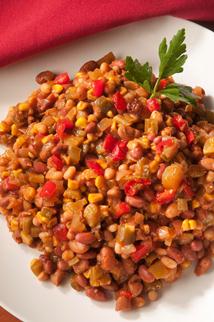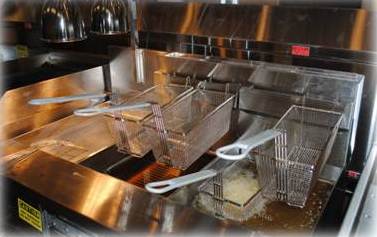An Heirloom Primer
Sunday, 03 June 2012 07:56
 When is a food “heirloom,” and when is it “heritage”? And is buying “local” more or less beneficial to the planet than buying “organic”? Here’s a briefing on teaching the meaning of popular food buzzwords to students.
When is a food “heirloom,” and when is it “heritage”? And is buying “local” more or less beneficial to the planet than buying “organic”? Here’s a briefing on teaching the meaning of popular food buzzwords to students.
By G. Allen Akmon, CEC, CHE
Accept the fact that when you decided on an exciting career within the foodservice industry, you were headed on a journey of lifelong learning. In order to help you solidify that notion, you are likely attempting to keep up a steady diet of the latest menu-enhancing buzzwords and current trends that rely in large part on historical and/or sustainable products. The verbiage can be overwhelming or even mystical in the fact that many seem to be using the terminology in a slightly different fashion.
Now consider the fact that if you are in the field of educating future generations of culinarians, it is not quite enough just to be familiar with terms like heirloom, antique and heritage.

 New confections and snacks offer a reliable barometer of consumers’ evolving flavor demands and food choices, as revealed at the 2012 Sweets & Snacks Expo.
New confections and snacks offer a reliable barometer of consumers’ evolving flavor demands and food choices, as revealed at the 2012 Sweets & Snacks Expo. It’s barbecue season, after all. Here are 10 tips from an educator and registered dietitian to make dishes served at the time-honored American backyard celebration both delicious and more healthful.
It’s barbecue season, after all. Here are 10 tips from an educator and registered dietitian to make dishes served at the time-honored American backyard celebration both delicious and more healthful. As foodservice operators and food manufacturers aim to remove trans fats and reduce saturated fats from foods, functionality and taste will remain the top priorities. This means that ingredient companies must provide more than simple drop-in solutions to solve food-industry problems. Research, education and culinary support are essential for food companies to offer healthier products. To develop a new product or improve the nutrition profile of a customer’s favorite food, companies can now look to ingredient partners for culinary resources and expertise.
As foodservice operators and food manufacturers aim to remove trans fats and reduce saturated fats from foods, functionality and taste will remain the top priorities. This means that ingredient companies must provide more than simple drop-in solutions to solve food-industry problems. Research, education and culinary support are essential for food companies to offer healthier products. To develop a new product or improve the nutrition profile of a customer’s favorite food, companies can now look to ingredient partners for culinary resources and expertise. There are many different ways that healthier options can be made available to students in school cafeterias. It is up to culinary educators to take action and make these changes happen.
There are many different ways that healthier options can be made available to students in school cafeterias. It is up to culinary educators to take action and make these changes happen.